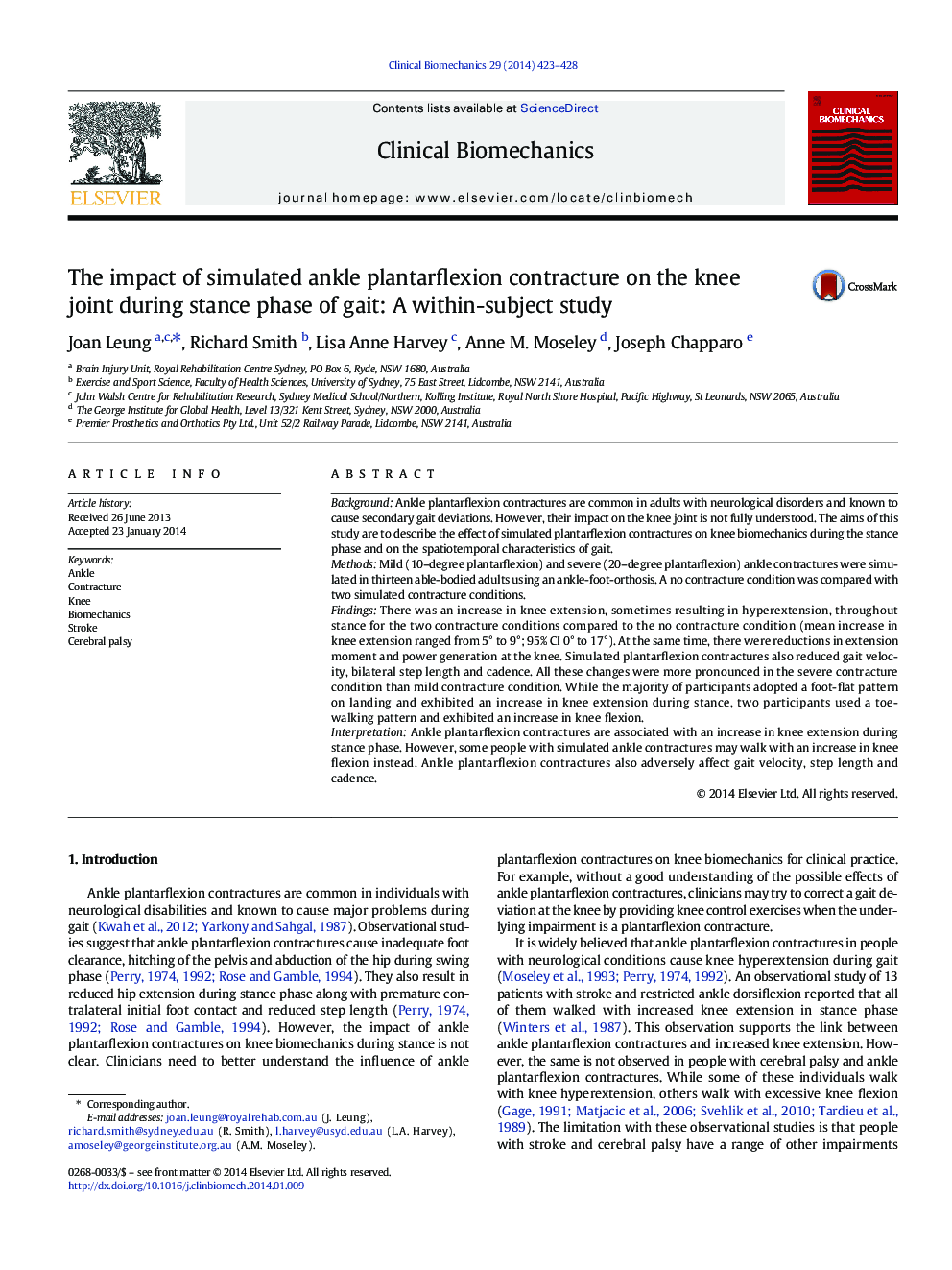| Article ID | Journal | Published Year | Pages | File Type |
|---|---|---|---|---|
| 6204853 | Clinical Biomechanics | 2014 | 6 Pages |
BackgroundAnkle plantarflexion contractures are common in adults with neurological disorders and known to cause secondary gait deviations. However, their impact on the knee joint is not fully understood. The aims of this study are to describe the effect of simulated plantarflexion contractures on knee biomechanics during the stance phase and on the spatiotemporal characteristics of gait.MethodsMild (10-degree plantarflexion) and severe (20-degree plantarflexion) ankle contractures were simulated in thirteen able-bodied adults using an ankle-foot-orthosis. A no contracture condition was compared with two simulated contracture conditions.FindingsThere was an increase in knee extension, sometimes resulting in hyperextension, throughout stance for the two contracture conditions compared to the no contracture condition (mean increase in knee extension ranged from 5° to 9°; 95% CI 0° to 17°). At the same time, there were reductions in extension moment and power generation at the knee. Simulated plantarflexion contractures also reduced gait velocity, bilateral step length and cadence. All these changes were more pronounced in the severe contracture condition than mild contracture condition. While the majority of participants adopted a foot-flat pattern on landing and exhibited an increase in knee extension during stance, two participants used a toe-walking pattern and exhibited an increase in knee flexion.InterpretationAnkle plantarflexion contractures are associated with an increase in knee extension during stance phase. However, some people with simulated ankle contractures may walk with an increase in knee flexion instead. Ankle plantarflexion contractures also adversely affect gait velocity, step length and cadence.
